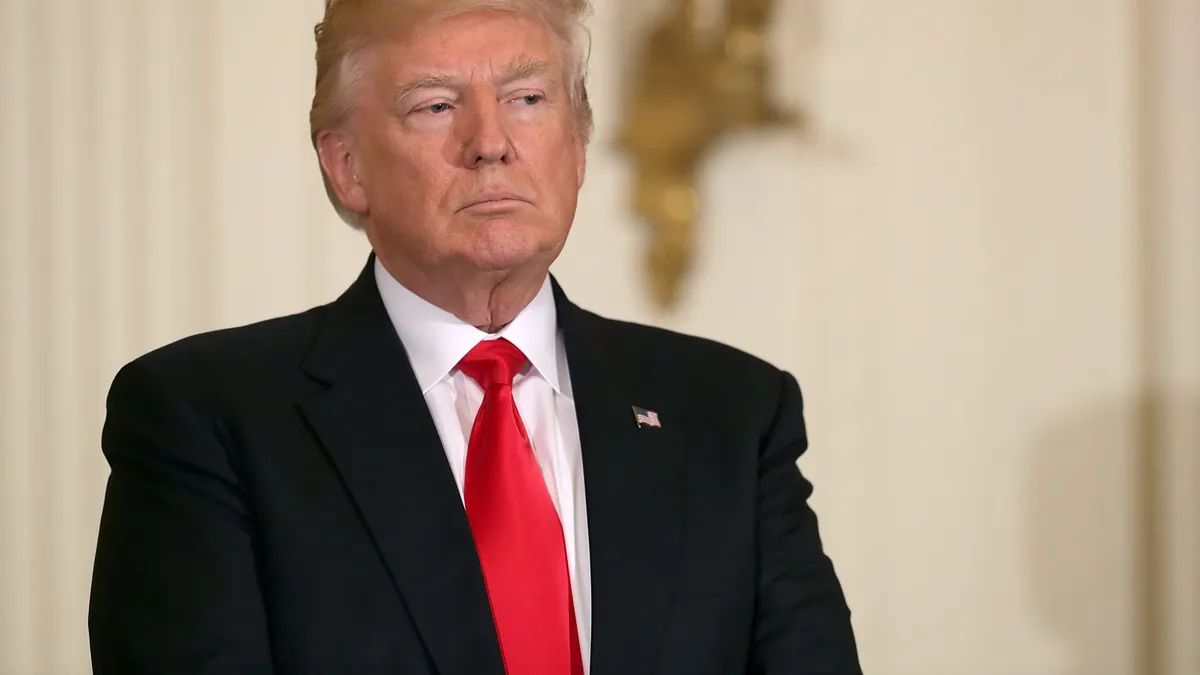Dive Brief:
- The Trump administration Tuesday released a report detailing its five-year strategic plan for STEM education, based on a vision where "all Americans will have lifelong access to high-quality STEM education and the United States will be the global leader in STEM literacy, innovation and employment," the document states.
- The strategy relies on four pathways: developing strategic partnerships between educational institutions, employers and the community; engaging students in trans-disciplinary activities to promote innovation; building computational literacy, and operating with transparency and accountability.
- Through building stronger foundations for STEM literacy, increasing diversity, equity and inclusion within STEM fields, and preparing the STEM workforce through programs like internships, teacher retention efforts and access to high-quality STEM materials, the STEM community can "collectively [chart] a course for the nation's success," the report says.
Dive Insight:
The White House's strategy follows President Obama's 2010 initiative aimed at advancing STEM education and putting the U.S. ahead of the rest of the pack in these areas. Both plans included a focus on partnerships and an overall increase in emphasis on STEM among community members. But despite their similarities, each has its own unique elements. Some pieces of the Trump team's package, however, including how much additional funding is required, are still to be determined.
Between the release of President Obama's plan and President Trump's, STEM's perception among educators and other members of the educational community has continued to shift. STEM skills are emphasized even more so than in 2010 and viewed as crucial to prepare today's students for tomorrow. Students are advised to take up subjects like computer science or engineering, which are said to be more useful and beneficial than liberal arts or humanities given the increased demand for STEM skills in the workforce and how they complement society's overall increase in reliance on technology.
But while STEM has taken a larger role in the educational landscape, and calls to boost access, resources and instruction on STEM-related topics have increased, some critics say it's too much. By placing an already limited amount of instructional and financial resources on STEM, schools are making less time for subjects such as ethics, philosophy and the arts, which advocates say are equally central to a child's success and well-being in the long run.
CNN anchor Fareed Zakaria summed up this opinion in a Washington Post column in 2015. He wrote, "As we work with computers ... the most valuable skills will be the ones that are uniquely human, that computers cannot quite figure out — yet. And for those jobs, and that life, you could not do better than to follow your passion, engage with a breadth of material in both science and the humanities, and perhaps above all, study the human condition."
As debate continues over the proper balance between STEM, the humanities and other curriculum areas, the Trump White House initiative is in line with many STEM supporters' hopes for future educational opportunities. The Trump administration hasn't always had a consistent approach toward STEM and career and technical education (CTE) — one of the president's proposed budgets, for instance, aimed to cut more than $1 billion in CTE funding. STEM educators and industry leaders will be watching to see whether this initiative takes a notable step in the opposite direction.












